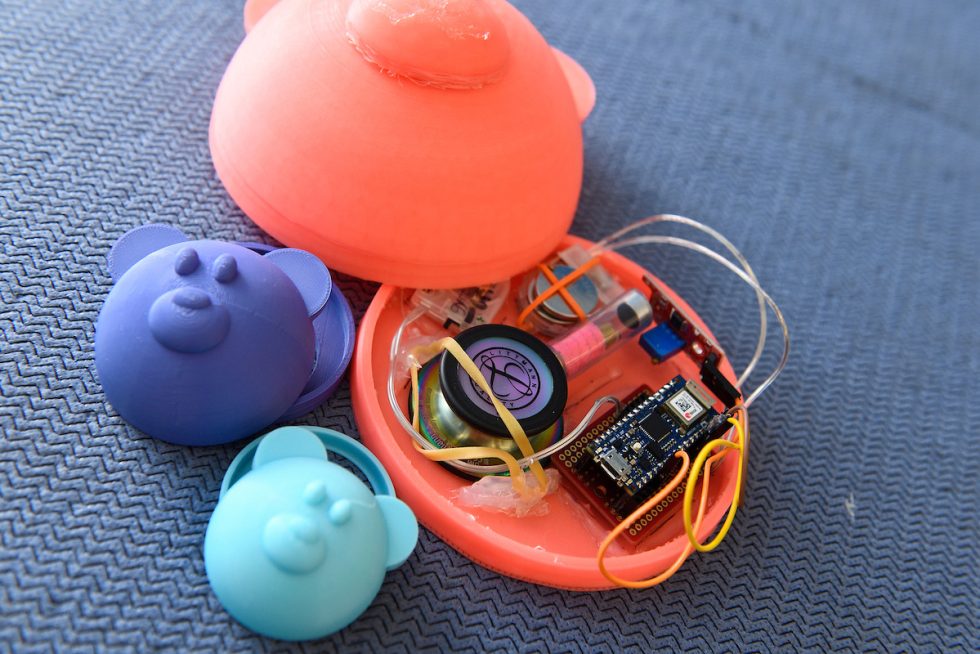From roll-over alerts to heartbeat notifications, students’ device helps keep baby safe.
By Dino Lencioni
A team of electric and computer engineering students has created a wearable infant heart and lung monitor that sends babies’ vital signs to a smartphone app, reassuring nervous parents and reducing the chance of Sudden Infant Death Syndrome, which claims the lives of about 2,500 babies a year.
“Our motivation was understanding the anxiety new parents experience regarding their baby’s safety, especially in the nighttime or when leaving the baby with a caretaker,” says team member Nidhi Batra. “Traditional audio/video baby monitors work but require constant monitoring. With our wearable device, alerts from the device are sent directly to the mother’s smartphone only when something may be wrong.”
Batra, Allison Shannon, and Zhehao Zhang will present a prototype of their fully rechargeable 3D Wearable Infant Heart and Lung Monitor, including all components, wiring, and a printed teddy bear face case, on May 1 at Design Day, the Whiting School of Engineering’s annual celebration of student innovation.
The monitor features a built-in stethoscope and microphone that processes heartbeat and lung sounds to detect pulse rate and irregular breathing. The microcontroller, equipped with a gyroscope, provides readings used to determine if the baby fell, was shaken, or flipped over. The wearable—envisioned as a small soft adhesive device resembling a teddy bear head— attaches to an infant’s onesie near their heart and is rechargeable.
“One challenge we have faced is selecting the microcontroller,” Batra says. “We have chosen the Arduino Nano 33 IOT for its speed, size, Wi-Fi connectivity, and built-in gyroscope. However, its small storage capacity limits our device to reading either the gyroscope or heart/lung sounds, not both simultaneously. Future plans involve adding another microcontroller to enable simultaneous monitoring or switching to a different microcontroller.”
As their prototype progresses through the testing phase, Batra explains that the overall size will be reduced and softer material introduced.



